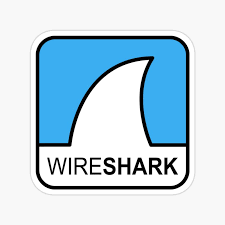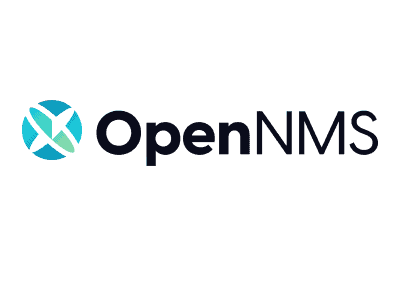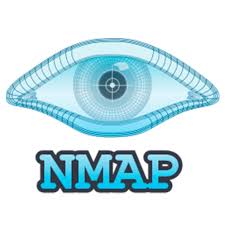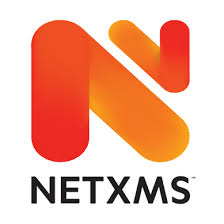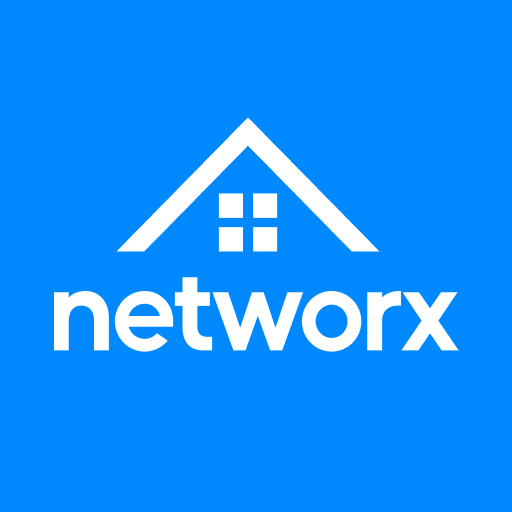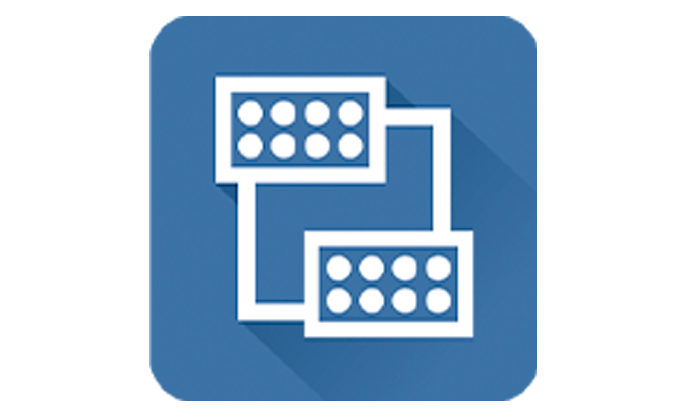NetControler – Smarter Network Monitoring & Management
Discover a curated collection of free solutions designed for administrators, IT teams, and businesses. Whether you need SNMP monitoring, traffic analysis, or network automation, netcontroler.com brings together software and support to keep your systems stable.
Lorem ipsum dolor sit amet, consectetur adipiscing elit
Lorem ipsum dolor sit amet, consectetur adipiscing elit
Lorem ipsum dolor sit amet, consectetur adipiscing elit
- Our Core Services
Network Operations Suite – Full Control of Your Network Infrastructure
With our platform, you don’t just download tools — you also gain expert assistance. We help you implement monitoring dashboards, configure alerts, and integrate management utilities into your corporate environment for maximum performance and reliability.
ntopng Professional (Free Tier) — Advanced Features with No-Cost Access General Information ntopng Professional (Free Tier) is the entry point into the professional edition of ntopng. It keeps the real-time visibility of the Community Edition but unlocks several advanced features such as traffic profiles, enhanced reporting, and integration with external identity systems. This makes it appealing for teams that have outgrown the limits of CE but are not yet ready for a full commercial license.
ntopng CE — Community Edition for Network Visibility General Information ntopng CE is the free community version of ntopng, designed to give administrators real-time visibility into network traffic without the cost of commercial editions. It is often deployed on a SPAN port or mirror interface, where it can instantly show which hosts and applications are consuming bandwidth. While the professional tiers add reporting and long-term analytics, CE remains a practical choice for quick troubleshootin
mitmproxy — Intercepting Proxy for Real Traffic Debugging General Information mitmproxy is one of those tools engineers keep around when network behavior just doesn’t make sense. It’s an intercepting proxy that sits in the middle of client and server traffic, letting administrators and testers see, change, or replay requests as they happen. Unlike packet captures, which only show raw flows, mitmproxy works higher up the stack, showing exactly what the browser, mobile app, or service is sending a
Zabbix — Monitoring That Grows With the Network Zabbix is one of those tools you find in bigger environments where Nagios or small agents just don’t cut it anymore. It’s open source, been around for years, and many enterprises trust it to keep track of thousands of servers, switches, apps, and even cloud services in one place. How it’s usually run
Wireshark — The Packet Tool That Ends Up on Every Admin’s Laptop What it is Wireshark isn’t just another program — it’s the packet sniffer most admins, security folks, and network engineers reach for. Open source, runs on Windows, Linux, macOS. If traffic acts weird and logs don’t tell the whole story, Wireshark is usually the next step.
Unicornscan — Asynchronous Scanner for Security Research What it is Unicornscan is a network reconnaissance tool built with a focus on speed and detail. Unlike traditional port scanners, it uses an asynchronous stateless design that allows it to send and analyze a massive number of packets very quickly. It’s popular among penetration testers and researchers who need visibility into large address ranges without waiting for hours.
The Dude — Simple Network Maps Without Extra Bloat What it is The Dude comes from MikroTik and is one of those free tools that admins either love for its simplicity or forget about because it doesn’t try to be “enterprise.” It started as a helper for managing MikroTik routers but turned out handy as a lightweight monitor for whole networks. It won’t replace a full observability stack, but for small shops or branch offices it often does the job.
Suricata — IDS/IPS That Keeps Up With Modern Traffic What it is Suricata is an open-source security engine that rolls together intrusion detection, intrusion prevention, and network monitoring. It’s maintained by the Open Information Security Foundation and has become a go-to choice for admins who need visibility without locking into a vendor. The main difference from older IDS tools is that it’s multi-threaded. In practice, that means it can keep up with high-speed links instead of dropping pac
Spiceworks Inventory — Free IT Asset Management Tool
What It Is
Spiceworks Inventory is a free IT asset management and network discovery solution tailored for small and medium-sized organizations. It provides visibility into hardware, software, and connected devices without the need for complex deployment or licensing costs.
How It Works
The platform uses agentless scanning and WMI/SNMP queries to collect data across Windows and networked devices. Results are accessible via a web interface, wh
SolarWinds IP Address Manager (Free) — Basic IP Tracking Tool General Information SolarWinds IP Address Manager (Free Edition) is a simplified version of the commercial IPAM solution from SolarWinds. It’s made for administrators who need to keep track of small address pools without relying on Excel sheets. The free edition supports up to 254 IP addresses, making it suitable for labs, branch offices, or small networks where manual tracking quickly becomes a hassle.
SoftPerfect Network Scanner — Fast IP and Port Scanning General Information SoftPerfect Network Scanner is a lightweight but versatile tool for exploring and auditing local networks. It’s designed for administrators who need quick visibility into devices, open ports, and shared resources. Despite being compact, it offers features that go beyond a simple IP sweep, such as SNMP probing, WMI queries, and remote service checks. The free version works with small environments, while the licensed editi
PingPlotter Free — Simple Graphs for Troubleshooting General Information PingPlotter Free is a small utility that takes the usual ping and traceroute commands and makes them visual. Instead of staring at numbers in a terminal, it shows how latency and packet loss change over time in easy-to-read graphs. The free edition isn’t as feature-rich as the commercial ones, but for many admins it’s enough to catch where the network is misbehaving.
PRTG Freeware — A Starter Pack for Monitoring General Information PRTG Freeware is basically the same engine as the commercial PRTG, just capped at 100 sensors. For a small network that usually means monitoring a handful of servers, switches, or key services. It runs only on Windows, but the setup is quick and that’s why many admins use it for branch offices, labs, or as an easy test before going for a full license.
PRTG Network Monitor — Monitoring That Works Out of the Box General Information PRTG is one of those tools people often recommend when someone says, “we need monitoring, but don’t want to spend weeks wiring it together.” It comes from Paessler and runs on Windows, giving a ready-to-go system with sensors, dashboards, and alerts already built in. There’s a free edition with a limited number of sensors — enough for small shops — and commercial licenses for larger environments.
OpenNMS — Open Monitoring Built for Scale General Information OpenNMS has been around for a long time and it’s one of those projects that tries to cover “everything at once.” It isn’t just about checking if a host is alive — the platform collects performance stats, handles fault events, and can even read NetFlow or sFlow data. That makes it useful in big, messy networks where dozens or even thousands of devices need to be tracked.
Open vSwitch — The Virtual Switch That Became a Standard General Information Open vSwitch (OVS) is an open-source switch built to work inside virtual environments. At its core it behaves like a physical switch, but because it’s software, it comes with extras: tunneling, VLANs, programmable flows. It first appeared as an add-on for KVM and Xen, and now it’s part of almost every serious cloud stack. If a team is building OpenStack or Kubernetes clusters, chances are OVS is somewhere in the network
Observium CE — Community Edition of Network Monitoring General Information Observium CE (Community Edition) is the free release of Observium, a network and system monitoring platform. It’s built around SNMP discovery and automatic graphing, aiming to reduce the manual setup work. The community version is trimmed down compared to the commercial one but still provides solid visibility into switches, routers, servers, and virtual machines. Many admins use it as a quick way to build a monitoring das
Nmap + Zenmap — Classic Scanner with a Handy Frontend General Information Nmap has been around for decades and is still the go-to tool when someone needs to scan a network. It’s command-line driven, packed with features, and can do anything from simple port sweeps to service fingerprinting and OS detection. The downside? Commands can get long and sometimes confusing for newcomers.
That’s where Zenmap comes in. It’s the official GUI wrapper for Nmap, giving admins a way to launch scans and view
NetworkMiner — Passive Tool for Digging into Network Traffic General Information NetworkMiner is not your typical scanner. It doesn’t poke devices or flood the network with probes. Instead, it sits quietly, listens, and pulls information from whatever packets pass by. That makes it valuable in environments where you can’t afford to disrupt traffic — think forensic investigations or security reviews.
NetXMS — Open Source Monitoring That Covers the Whole Stack General Information NetXMS is an open-source monitoring system that tries to cover everything at once — servers, network devices, apps, even custom scripts if needed. It’s not a tiny utility; it’s more like a full package that can stand in for commercial suites. Some companies use it as a free replacement for tools like PRTG or SolarWinds, especially when they want one central place to keep an eye on the entire infrastructure.
NetWorx — Simple Tool for Watching Bandwidth General Information NetWorx is a small utility that shows how much network traffic a machine is using. It doesn’t try to be a big monitoring suite — instead, it focuses on the basics: keep an eye on upload and download speeds, log usage, and warn when something looks unusual. Many admins keep it around for quick checks on workstations, or for users who need to track internet quotas.
NetDisco — Open Source Network Inventory with a Web UI General Information NetDisco is an open-source app that many admins keep in their toolbox for one reason: it shows where everything is plugged in. Instead of digging through spreadsheets or walking to wiring closets, NetDisco asks switches and routers directly and builds its own inventory. It’s not flashy, but it does the job — map devices, find hosts, and keep track of connections.
NetCrunch Tools — Free Utilities for Everyday Network Checks General Information NetCrunch Tools is a free toolkit for Windows that bundles together a set of small network utilities. Instead of installing multiple separate programs, administrators get a single interface with ping, traceroute, port scan, SNMP browser, DNS lookup, and other everyday functions. It’s not a monitoring platform in itself, but a handy set of tools for troubleshooting and diagnostics.
Nagios Core — The Classic That Still Runs General Information Nagios Core is one of those tools that refuses to disappear. It’s been around since the early 2000s, and in many networks it’s still running quietly in the background. The idea is simple: check if something is alive, complain if it’s not. It doesn’t look modern and never tried to, but the stability and the ocean of plugins keep it relevant.
LanTopoLog — Mapping and Watching LAN Topology General Information LanTopoLog is a Windows tool aimed at one thing: showing how the LAN is actually wired. Instead of keeping diagrams in Visio and guessing which switch port goes where, the program asks the switches directly (via SNMP) and draws the map automatically. For admins, that means less manual work and fewer surprises when tracing cables or explaining layout to colleagues.
LANState Free — Basic Network Mapping on Windows General Information LANState Free is the limited edition of LANState, designed for administrators who need simple monitoring and a network map without investing in the full product. It shows a live diagram of devices and their status but with fewer management features compared to the commercial version. For small teams or labs, this stripped-down edition is often enough to get real-time visibility at no cost.
LANState — Visual Map for Network Monitoring General Information LANState is a Windows tool that shows the network as a picture rather than a list. Devices appear on a map, links between them are drawn, and their status updates in real time. For admins, this kind of view is often quicker to read than tables full of numbers — you can literally see which part of the LAN has a problem.
LANMonitor — Lightweight Tool for Local Network Checks General Information LANMonitor is one of those small utilities that many admins keep on hand when they don’t want to fire up a full monitoring suite. It doesn’t try to replace platforms like Zabbix or Icinga; instead, it focuses on the basics — is the host alive, is a port open, is the switch interface overloaded. Because it is light and easy to set up, it often ends up running on an ordinary workstation or a support laptop during troublesho
Icinga 2 — Modern Take on Classic Monitoring General Information Icinga 2 started as a fork of Nagios, but with time it became its own system. The basic idea stayed the same — watch hosts and services, send alerts when something goes wrong — yet the architecture is far more flexible. It’s used in places where classic checks are still valuable, but the environment already needs automation, APIs, and better integration with other tools.
Fing — Fast Way to See What’s on the Network General Information Fing began life as a small command-line utility, but over time it turned into a set of tools that run on just about anything — laptops, servers, even phones. The main idea hasn’t changed: find out who is on the network and what they are doing. Many admins like it because it’s quick, doesn’t require long setup, and works well when a fast answer is needed, not a full-blown monitoring system.
EtherApe — Watching Network Traffic as a Graph General Information EtherApe is a visual network monitor that shows connections as a live diagram instead of just lines of text. Each host becomes a circle, and the traffic between them appears as links that grow thicker when more data flows. For administrators this is sometimes more intuitive than digging through counters — especially when trying to figure out which system suddenly started talking too much on the network.
Darkstat — Lightweight Traffic Monitoring from the Command Line General Information Darkstat is a compact network traffic analyzer that captures packets and turns them into simple statistics. It is often chosen when administrators need a quick way to see who is using bandwidth on a network segment without deploying a full monitoring platform. The program runs quietly in the background and provides a small web interface with graphs and traffic breakdowns. Its strength lies in being minimal, porta
Cacti — Graphing with RRDTool at Scale General Information Cacti is one of those long-standing monitoring systems that many network teams still rely on. Built around RRDTool, it collects numbers over time and turns them into graphs that make sense for capacity planning and daily checks. Internet providers, data centers, and large enterprises often keep it in place because it handles big volumes of traffic data without breaking and offers consistency over years of operation.
Angry IP Scanner — Simple Cross-Platform Scanner General Information Angry IP Scanner has been around for years and is still one of the most convenient ways to check who is online in a subnet. It is an open-source tool that runs not only on Windows, but also on Linux and macOS, which makes it useful in networks where different systems coexist. The program is small, fast to launch, and doesn’t try to be more than it is — a quick scanner that answers the basic question: “what’s alive right now?”
Advanced IP Tools — Practical Utilities for Windows Networks General Information Advanced IP Tools is not a single scanner, but rather a small bundle of utilities aimed at routine network administration on Windows. The idea behind it is simple: instead of juggling a separate program for each task, an administrator can launch one interface and get scanning, monitoring, and a few remote management features in one place. For smaller teams or in situations where speed matters more than elaborate das
Advanced IP Scanner — Windows Network Discovery in Practice General Information Advanced IP Scanner is a small utility created for quick network sweeps on Windows systems. It is widely used by administrators when there is a need to see which machines are alive in a subnet, gather basic details, and reach them directly without setting up a heavy monitoring platform. The program is fast, portable, and has enough features to be practical during audits or troubleshooting, yet it stays simple enough

- About Us
About NetControler
Netcontroler.com is a dedicated platform for network management software. Our mission is to gather the most trusted free tools in one place and make them accessible for IT professionals, administrators, and businesses worldwide.
We provide value for startups, small companies, and large corporate IT departments. By using our catalog, you can implement monitoring, automate configuration, and optimize network performance without expensive licensing fees.
Categories on netcontroler.com include SNMP monitoring, traffic analysis, device configuration, security logging, topology mapping, and network automation. Each program is tested for reliability and long-term use.
Our uniqueness lies in combining free software with expert support. Our team assists with installing, configuring, and integrating these tools into existing infrastructures. From simple monitoring to full-scale network orchestration, we help build solutions that are both secure and efficient.
With netcontroler.com, you don’t just get software — you get a partner in building stable, secure, and manageable IT networks.
FAQ
1. What is NetControler?
2. Can NetControler work with multi-vendor equipment?
3. How does NetControler improve network security?
4. Is NetControler suitable for large enterprises?
5. Do you offer customer support?
- Testimonials
25k+ users improving their financial health
- Our Blogs
Insights That Keep You One Step Ahead
advanced ip tools: Comprehensive Network Management Solution
Effective network management is crucial for any organization, and Advanced IP Tools is a powerful software that provides a comprehensive solution for monitoring, diagnosing, and optimizing network performance. In this article, we will delve into the features and benefits of Advanced IP Tools, with a focus on its logs and alerts capabilities.
Understanding Network Monitoring and Logging
Network monitoring and logging are critical components of network management. Monitoring involves tracking network performance and identifying potential issues, while logging involves collecting and storing data about network events. Advanced IP Tools provides a robust logging and alerting system that enables administrators to quickly identify and respond to network issues.
Advanced IP Tools logs and alerts provide real-time visibility into network performance, enabling administrators to quickly identify and troubleshoot issues. The software provides customizable logging and alerting options, allowing administrators to tailor the system to their specific needs.
Configuring Advanced IP Tools for Logs and Alerts
Configuring Advanced IP Tools for logs and alerts is a straightforward process. Administrators can set up custom logging and alerting rules based on specific network events, such as changes to network configuration, security threats, or performance issues.
| Logging Option | Description |
|---|---|
| Event Logging | Logs network events, such as login attempts and configuration changes |
| Performance Logging | Logs network performance data, such as bandwidth usage and latency |
| Security Logging | Logs security-related events, such as intrusion attempts and malware detection |
Advanced IP Tools also provides a range of alerting options, including email, SMS, and SNMP traps. Administrators can customize alerting rules based on specific network events, ensuring that they are notified promptly of any issues.
Advanced IP Tools vs. Other Network Management Tools
Advanced IP Tools is a powerful network management tool that offers a range of features and benefits. Here’s how it compares to other popular network management tools:
| Tool | Logging and Alerting | Network Monitoring | Scalability |
|---|---|---|---|
| Advanced IP Tools | Customizable logging and alerting | Real-time network monitoring | Scalable to large networks |
| Tool A | Basic logging and alerting | Periodic network monitoring | Limited scalability |
| Tool B | No logging and alerting | No network monitoring | Not scalable |
As shown in the table, Advanced IP Tools offers more comprehensive logging and alerting capabilities, as well as real-time network monitoring and scalability to large networks.
Best Practices for Using Advanced IP Tools
To get the most out of Advanced IP Tools, here are some best practices to follow:
- Configure custom logging and alerting rules to meet your specific needs
- Monitor network performance regularly to identify potential issues
- Use the software’s diagnostic tools to troubleshoot issues quickly
By following these best practices, you can ensure that you are using Advanced IP Tools to its full potential and getting the most out of your network management investment.
lanstate: Streamlining Network Management
Efficient network management is crucial for any organization, as it directly impacts productivity and overall performance. LANState is a powerful network management tool that provides real-time monitoring, diagnostics, and optimization capabilities. In this article, we will delve into the world of LANState, exploring its features, configuration, and benefits, with a focus on logs and alerts.
Understanding Network Monitoring and Management
Network monitoring and management involve tracking network performance, identifying issues, and optimizing network resources. This process enables administrators to ensure network reliability, security, and efficiency. LANState logs and alerts play a critical role in this process, providing timely notifications and detailed information about network events.
LANState offers a comprehensive platform for network management, including:
- Real-time monitoring: LANState provides real-time monitoring of network devices, services, and applications, enabling administrators to quickly identify and respond to issues.
- Logs and alerts: LANState generates detailed logs and alerts, providing valuable insights into network events and enabling administrators to take proactive measures.
- Diagnostics and optimization: LANState offers advanced diagnostic and optimization tools, enabling administrators to troubleshoot issues and optimize network performance.
Configuring LANState for Logs and Alerts
To get started with LANState logs and alerts, administrators need to configure the platform. Here’s a step-by-step guide:
1. Install and launch LANState on your network device or server.
2. Configure the logging options, specifying the types of events to log and the log file location.
3. Set up alerts, defining the conditions that trigger notifications and the notification methods (e.g., email, SMS).
4. Configure the alert escalation process, specifying the severity levels and response procedures.
| Logging Option | Description |
|---|---|
| Event types | Select the types of events to log (e.g., security events, system events) |
| Log file location | Specify the location of the log file (e.g., local disk, network share) |
| Log file format | Choose the log file format (e.g., CSV, XML) |
Using LANState Logs and Alerts for Network Diagnostics
LANState logs and alerts provide valuable insights into network events, enabling administrators to diagnose and troubleshoot issues. Here’s how to use LANState logs and alerts for network diagnostics:
1. Analyze the logs to identify patterns and anomalies.
2. Use the alert system to receive notifications about critical events.
3. Use the diagnostic tools to troubleshoot issues and identify root causes.
| Diagnostic Tool | Description |
|---|---|
| Network topology | Visualize the network topology to identify connectivity issues |
| Device monitoring | Monitor device performance and status |
| Packet analysis | Analyze network packets to diagnose issues |
Optimizing Network Performance with LANState
LANState provides advanced tools for optimizing network performance. Here’s how to use LANState to optimize your network:
1. Use the performance monitoring tools to identify bottlenecks and areas for improvement.
2. Analyze the logs to identify trends and patterns.
3. Use the optimization tools to configure network settings and improve performance.
| Optimization Tool | Description |
|---|---|
| Network configuration | Configure network settings to optimize performance |
| Quality of Service (QoS) | Configure QoS policies to prioritize traffic |
| Network routing | Optimize network routing to improve performance |
icinga 2: Mastering Modern Network Monitoring
Welcome to this comprehensive guide on Icinga 2, a cutting-edge network monitoring solution designed to help administrators streamline their IT operations. In this article, we’ll delve into the world of Icinga 2, exploring its features, configuration, and optimization techniques to ensure your network is running smoothly and efficiently.
Getting Started with Icinga 2
Before diving into the nitty-gritty of Icinga 2, let’s cover the basics. Icinga 2 is a monitoring tool that enables you to keep track of your network’s performance, detect potential issues, and receive alerts when something goes wrong. With its scalable architecture and flexible configuration options, Icinga 2 is an ideal choice for businesses of all sizes.
One of the key benefits of Icinga 2 is its ability to integrate with a wide range of devices and systems, including servers, switches, routers, and more. This allows you to monitor your entire network from a single dashboard, making it easier to identify and troubleshoot problems.
Configuring Icinga 2 for Logs and Alerts
Now that we’ve covered the basics, let’s move on to configuring Icinga 2 for logs and alerts. This involves setting up the monitoring tool to collect log data from your devices and systems, as well as defining alert rules to notify you when something goes wrong.
To get started, you’ll need to configure the Icinga 2 agent on each device or system you want to monitor. This involves installing the agent software and configuring it to send log data to your Icinga 2 server.
Once you’ve configured the agent, you can start defining alert rules using Icinga 2’s built-in notification system. This allows you to specify the conditions under which an alert should be triggered, as well as the notification methods to use (e.g., email, SMS, etc.).
| Feature | Icinga 2 | Nagios |
|---|---|---|
| Scalability | Highly scalable architecture | Limited scalability |
| Integration | Supports a wide range of devices and systems | Limited integration options |
| Alerting | Advanced alerting system with customizable rules | Basic alerting system |
Optimizing Icinga 2 for Performance
Now that we’ve covered configuration and alerting, let’s move on to optimizing Icinga 2 for performance. This involves fine-tuning the monitoring tool to ensure it’s running smoothly and efficiently, even in large-scale environments.
One of the key optimization techniques for Icinga 2 is to use distributed monitoring. This involves setting up multiple Icinga 2 servers to distribute the monitoring load, ensuring that your network is always being monitored, even in the event of a server failure.
Another optimization technique is to use Icinga 2’s built-in clustering feature. This allows you to group multiple servers together, enabling you to monitor your network from a single dashboard and ensuring high availability.
| Tool | Icinga 2 | Prometheus | Zabbix |
|---|---|---|---|
| Scalability | Highly scalable architecture | Limited scalability | Moderate scalability |
| Integration | Supports a wide range of devices and systems | Limited integration options | Moderate integration options |
| Alerting | Advanced alerting system with customizable rules | Basic alerting system | Advanced alerting system |
Troubleshooting Common Issues
Finally, let’s cover some common issues you may encounter when using Icinga 2, along with some troubleshooting tips to help you resolve them.
One common issue is the failure of the Icinga 2 agent to connect to the server. This can be caused by a variety of factors, including firewall rules, network connectivity issues, or incorrect configuration.
To troubleshoot this issue, try checking the agent logs for error messages, verifying that the firewall rules are correct, and ensuring that the network connectivity is stable.
| Issue | Solution |
|---|---|
| Agent connection failure | Check agent logs, verify firewall rules, and ensure network connectivity |
| Alerting issues | Verify alert rules, check notification settings, and ensure that the alerting system is enabled |
| Performance issues | Optimize Icinga 2 configuration, use distributed monitoring, and enable clustering |
Spiceworks Inventory: Streamlining Network Management with Real-Time Logs & Alerts
Effective network management is crucial for any organization to ensure seamless operations and prevent costly downtime. Spiceworks Inventory is a comprehensive network management tool that provides real-time logs and alerts, allowing administrators to monitor, diagnose, and optimize their network infrastructure with ease. In this article, we will explore the features and capabilities of Spiceworks Inventory, and provide a practical guide on how to configure, monitor, and optimize your network using this powerful tool.
Understanding the Importance of Network Monitoring
Network monitoring is the process of tracking and analyzing network performance, security, and other key metrics to ensure optimal network function. It involves collecting and analyzing data from various sources, including network devices, servers, and applications. By monitoring network activity, administrators can identify potential issues, detect security threats, and optimize network performance.
Spiceworks Inventory provides a centralized platform for network monitoring, allowing administrators to view real-time logs and alerts, track network performance, and receive notifications when issues arise. With Spiceworks Inventory, administrators can:
- Monitor network devices, servers, and applications in real-time
- Receive alerts and notifications when issues arise
- Track network performance and identify areas for optimization
- Analyze logs and data to detect security threats and troubleshoot issues
Configuring Spiceworks Inventory for Optimal Network Management
To get the most out of Spiceworks Inventory, administrators need to configure the tool to meet their specific network management needs. Here are the steps to follow:
1. Install and Set Up Spiceworks Inventory: Download and install Spiceworks Inventory on your network, and follow the setup wizard to configure the tool.
2. Configure Network Devices and Servers: Add your network devices and servers to Spiceworks Inventory, and configure the tool to collect data from these sources.
3. Set Up Alerts and Notifications: Configure alerts and notifications to receive real-time updates on network activity and issues.
4. Customize Dashboards and Reports: Customize dashboards and reports to view key network metrics and performance data.
Using Spiceworks Inventory for Network Diagnostics and Optimization
Spiceworks Inventory provides a range of tools and features to help administrators diagnose and optimize network performance. Here are some of the key features:
1. Network Mapping: Create visual maps of your network to identify devices, connections, and potential issues.
2. Log Analysis: Analyze logs and data to detect security threats, troubleshoot issues, and optimize network performance.
3. Performance Monitoring: Monitor network performance in real-time, and receive alerts and notifications when issues arise.
4. Configuration Management: Manage network device configurations, and track changes to prevent errors and downtime.
| Feature | Spiceworks Inventory | Competitor A | Competitor B |
|---|---|---|---|
| Network Mapping | |||
| Log Analysis | |||
| Performance Monitoring | |||
| Configuration Management |
| Spiceworks Inventory | Pricing | Features |
|---|---|---|
| Free Version | Free | Limited features |
| Paid Version | $X per year | Full features |
| Comparison | Spiceworks Inventory | Competitor A | Competitor B |
|---|---|---|---|
| Pricing | $X per year | $Y per year | $Z per year |
| Features | Full features | Limited features | Limited features |
Conclusion
Spiceworks Inventory is a powerful network management tool that provides real-time logs and alerts, allowing administrators to monitor, diagnose, and optimize their network infrastructure with ease. With its comprehensive features and user-friendly interface, Spiceworks Inventory is an ideal solution for organizations of all sizes. By following the configuration and optimization tips outlined in this article, administrators can get the most out of Spiceworks Inventory and ensure optimal network performance.
etherape: Comprehensive Network Monitoring Solution
EtherApe is a network monitoring tool that provides real-time visibility into network traffic, enabling administrators to quickly identify and troubleshoot issues. In this article, we will delve into the world of EtherApe, exploring its features, configuration, and optimization techniques to help you get the most out of this powerful tool.
Understanding Network Monitoring with EtherApe
Network monitoring is a critical aspect of network management, allowing administrators to detect and respond to issues before they become major problems. EtherApe provides a graphical representation of network traffic, making it easy to identify trends, patterns, and anomalies.
EtherApe’s logs and alerts feature allows administrators to set up custom notifications for specific events, ensuring prompt attention to potential issues. This feature is particularly useful for large networks, where manual monitoring can be impractical.
Configuring EtherApe for Optimal Performance
To get the most out of EtherApe, it’s essential to configure it correctly. Here are some steps to follow:
- Install EtherApe on a dedicated machine or virtual machine.
- Configure the network interface to capture traffic.
- Set up logging and alerting to notify administrators of potential issues.
- Customize the dashboard to display relevant information.
Table 1: EtherApe Configuration Options
| Option | Description |
|---|---|
| Network Interface | Select the network interface to capture traffic. |
| Logging | Enable or disable logging. |
| Alerting | Enable or disable alerting. |
Using EtherApe for Diagnostics and Optimization
EtherApe’s graphical representation of network traffic makes it an ideal tool for diagnostics and optimization. Here are some ways to use EtherApe for these purposes:
- Identify bottlenecks and areas of congestion.
- Monitor network performance over time.
- Detect and respond to security threats.
- Optimize network configuration for improved performance.
Table 2: EtherApe Diagnostic and Optimization Features
| Feature | Description |
|---|---|
| Traffic Analysis | Analyze network traffic to identify trends and patterns. |
| Performance Monitoring | Monitor network performance over time. |
| Security Threat Detection | Detect and respond to security threats. |
Comparison with Other Network Monitoring Tools
EtherApe is just one of many network monitoring tools available. Here’s a comparison with other popular tools:
Table 3: Network Monitoring Tool Comparison
| Tool | Features | Pricing |
|---|---|---|
| EtherApe | Real-time traffic analysis, logging, and alerting. | Free and open-source. |
| Nagios | Comprehensive monitoring and alerting. | Free and open-source, with commercial options. |
| SolarWinds | Network performance monitoring and diagnostics. | Commercial, with pricing starting at $1,045. |
softperfect network scanner: Advanced Network Monitoring and Diagnostics
As a network administrator, it’s essential to have a comprehensive understanding of your network’s performance, security, and reliability. SoftPerfect Network Scanner is a powerful tool that provides logs and alerts to help you achieve this goal. In this article, we’ll explore the advanced features of SoftPerfect Network Scanner, including configuration, monitoring, diagnostics, and optimization.
Getting Started with SoftPerfect Network Scanner
Before diving into the advanced features, let’s cover the basics. SoftPerfect Network Scanner is a free, fast, and easy-to-use network scanner that can scan IP addresses, ports, and services. It’s compatible with Windows, macOS, and Linux operating systems. To get started, simply download and install the software, then launch it to begin scanning your network.
Configuring Logs and Alerts
SoftPerfect Network Scanner provides detailed logs and alerts to help you monitor and diagnose network issues. To configure logs and alerts, follow these steps:
- Open the SoftPerfect Network Scanner settings panel
- Click on the “Logs” tab
- Select the log level and format
- Configure alert settings, including notification types and thresholds
With logs and alerts configured, you can monitor your network’s performance and receive notifications when issues arise.
Advanced Diagnostics and Optimization
SoftPerfect Network Scanner provides advanced diagnostics and optimization features to help you troubleshoot and improve network performance. Some key features include:
- Network discovery and mapping
- Port scanning and service detection
- OS detection and device identification
- Network security auditing and vulnerability scanning
These features enable you to identify potential issues, optimize network performance, and ensure network security.
| Feature | SoftPerfect Network Scanner | Competitor 1 | Competitor 2 |
|---|---|---|---|
| Network discovery and mapping | Yes | No | Partial |
| Port scanning and service detection | Yes | Yes | No |
| OS detection and device identification | Yes | No | Partial |
| Feature | SoftPerfect Network Scanner | Competitor 1 | Competitor 2 |
|---|---|---|---|
| Network security auditing | Yes | No | Partial |
| Vulnerability scanning | Yes | Yes | No |
| Alerts and notifications | Yes | No | Partial |
Conclusion
SoftPerfect Network Scanner is a powerful tool for network administrators, providing advanced features for logs, alerts, diagnostics, and optimization. With its ease of use, comprehensive feature set, and compatibility with multiple operating systems, it’s an ideal solution for modern network management.
Try SoftPerfect Network Scanner today to improve your network’s visibility, reliability, and performance.





